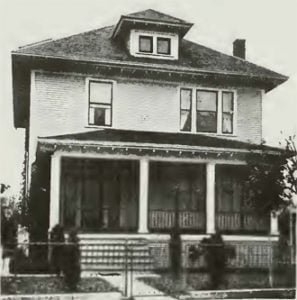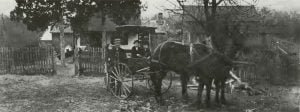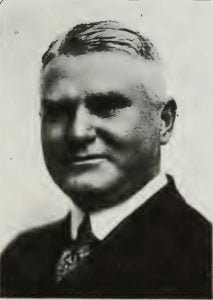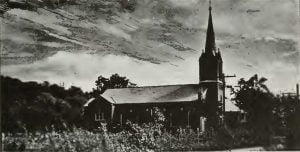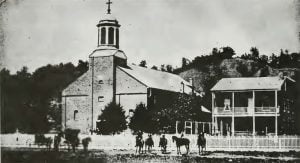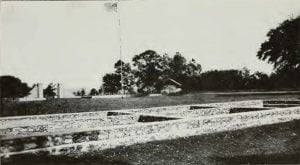In summarizing or evaluating the history of Prairie du Rocher, one must note the impact that historical events and influences have made on present day, Prairie du Rocher. The community is today, as it was in the 1700′ s, basically an agricultural community. The farmers no longer live in the village, but they remain the basic economic factor in the village. The farm lands which surround Prairie du Rocher, are among the most fertile and bountiful soils in the world. The limestone bluffs, from which the French obtained stone for the construction of Fort Chartres, today provide livelihood for many of the villagers. The cemetery in which the inhabitants bury their dead in 1972 is the same one in which their ancestors buried their loved ones as early as 1722. The rock bluffs and the wide Mississippi River isolate the community from the outside world today, as they did in the early years. The mosquitoes remain as numerous and voracious as they were in 1839; and the damp, wet, unbearable, and unhealthy conditions return during the wet months. The population today is approximately 750, a gain of only 250 since 1859, over a hundred years ago. The old, distinctly French names such as Barbeau, Bievenue, Langlois, Louviere, De Rousse, and Duclos, still appear on the village registers, but the influence of the French is not limited to the inheritance of names. Over 90% of the residents today, belong to the Roman Catholic Church. The Church remains the center of the community. The majority of the villagers today, are complacent, contented, unambitious, good-natured, and happy – traits directly traceable to their ancestors. Most of the villagers remain to an amazing degree, as Montague described it, “free from that strife, contention, and turmoil, which attends the pursuit of wealth and political preferment.” In order to observe this living historical heritage, one need only attend the annual church picnic, rendezvous, or witness the group of villagers dressed in 18th century costumes, on New Year’s Eve, who move from house to house proclaiming the end of another year, in the old familiar words of the La Gui-annee.

